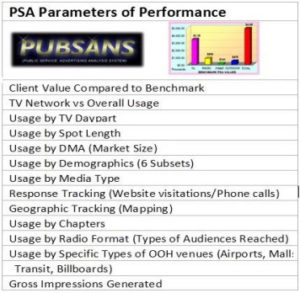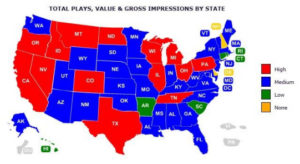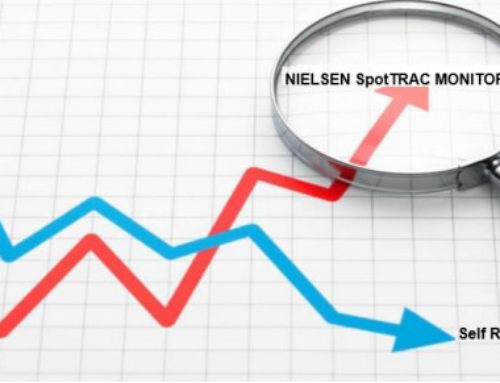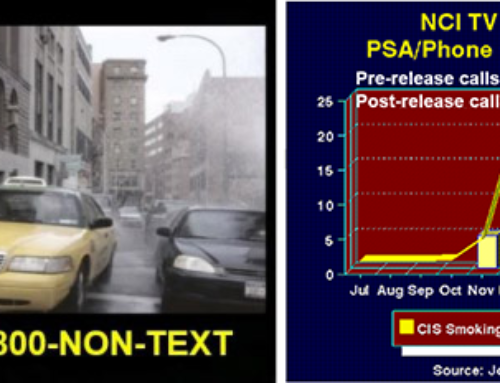Background
Goodwill Communications has been distributing national PSA campaigns for over three decades, and during that time we have seen PSAs that were not well conceived; we have seen some that should not have been produced in the first place; and we have seen many that overlook some of the basic rules governing PSA attainment in all media.
These campaigns are expensive; many can cost a non-profit hundreds of thousands of your donor dollars, so the central question is: Does your PSA program meet your organizational objectives, and how do you know?
In the latest series of articles to inform and educate our associates in the field of public service advertising, in this piece we are going to address:
- What is a PSA Audit?
- Why does it matter?
- What are the mechanics?
The PSA Audit
Most of us get so wrapped up in our daily jobs that we are on auto pilot – management wants some stats for the board to prove the PSA program they approved is working, and as long as you feed them some data, they are happy. We want to take this to another level, which is why we conceived the concept of a PSA Audit™ which poses four underlying questions:
- How well is your PSA program performing?
- How does your campaign compare to a standard?
- Does your PSA program support your critical mission?
- What is your PSA ROI?
 Your PSA Program Performance
Your PSA Program Performance
There are at least a dozen different ways to demonstrate if your campaign is performing well, and rather than to detail them all here, you can go to the article posted to our website entitled: “How You Can Use Evaluation Data to Fine Tune Your PSA Program” at: https://www.psaresearch.com/bib4401.html
This article outlines what we call our “PSA Parameters of Performance,™ which is the essence of a PSA Audit.
There are several other reports we provide on our client portal that are part of our PSA Audit, which include:
- Benchmark Report
- Demographic
- Daypart Report (time of day PSAs aired)
- DMA Report (usage by size of market linked to populations)
- Spot Length Report
- Geographic (PSA Map) Report
By comparing your results to an objective benchmark early in campaign development, you can begin to spot trends that can give you the rationale for taking specific corrective actions. To learn more about benchmarking, go to the article below which discusses this procedure in more detail. https://www.psaresearch.com/benchmark.html.
 One of the most intuitive reports we prepare as part of an audit is a geographic report which shows your PSA usage displayed on a U.S. map and four different levels of PSA usage such as shown here.
One of the most intuitive reports we prepare as part of an audit is a geographic report which shows your PSA usage displayed on a U.S. map and four different levels of PSA usage such as shown here.
The second is a national network report, which shows which networks used the non-profit’s PSAs. For our clients, we typically contact over 200 national TV networks and personally pitch the client’s PSA to them so this report is especially useful to demonstrate network usage and the impact of our outreach efforts.
Supporting Your Critical Mission
Only you, the non-profit manager, knows what your critical mission is, but you should know if your PSA campaign is supporting it or not. By licking on the following link, it will take you to the home page of our website where we provide different case histories on how PSAs can be used to meet your critical mission at: www.psaresearch.com/cafe_home.html
Return On Investment
Surely, one of the things your management is going to want to know is: “what was our return on investment?” This is a very easy number to calculate, but there is no standard to determine if you are above or below the norm. It is calculated by dividing your PSA values by the cost (both production and distribution) and arriving at an ROI.
Typically this number will be 100+ to 1, meaning, that for every dollar invested in your PSA program, you received $100+ in value.
 Impact on Fund Raising
Impact on Fund Raising
A very obscure rule governs how PSA values can help your non-profit’s fund raising which is somewhat technical, but the case history at the following link gives you some guidance on how you can treat PSA values to help your fund raising efforts: www.goodwillcommunications.com/wp-content/uploads/2018/11/USING-PSA-VALUES.pdf
Recommendations for Improvement
Finally, and perhaps the most important aspect of our PSA Audit, are our recommendations for how you can improve your PSA program, based on what we learned from the PSA Audit. What does this process cost? Zip…nada, nyente….in other words nothing. We are willing to do a very thorough analysis of your PSA program at no cost whatsoever to your non-profit. Too good to be true? Not really, because we want you to use your donor dollars intelligently so that you can achieve the objectives that you established when you first started your non-profit. Perhaps more importantly, we share your passion for making our world a better place.
About the author: Bill Goodwill designed the first evaluation software for PSA campaigns in 1983, and since that time he has written and lectured extensively about the importance of PSA evaluation.







Leave A Comment